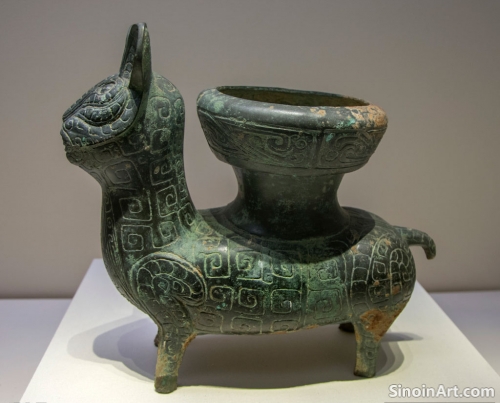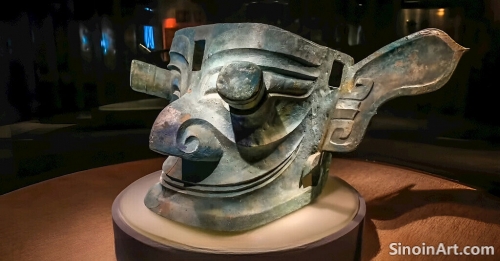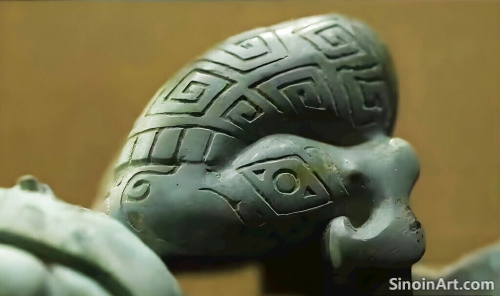Bronze Ware and the Rise of Cities in Ancient China: Power, Trade, and Urban Centers
|
The production and trade of bronze ware played a significant role in the rise of cities in ancient China, supporting economic growth, political consolidation, and the development of urban centers. The control of bronze, and its role in various aspects of life, helped to create a foundation for the urban environments of ancient China.  Cities often emerged as centers of bronze production, attracting skilled artisans, traders, and government officials, and helping to facilitate a concentration of wealth and power. The production of bronze was a large scale and complex undertaking that helped to draw people to urban areas. The development of urban centers was dependent on the technology and skills associated with bronze work.  The use of bronze in ritual objects, weapons, and tools also helped to reinforce social hierarchies and consolidate political control, as rulers sought to monopolize the power and prestige associated with this material. The production and trade of bronze became a central part of the urban economic activity. The accumulation of resources in these urban areas helped to support a more complex social and political order.  The presence of elaborate bronze artifacts in cities also highlights their role as cultural centers, where artistic and intellectual achievements were fostered and celebrated. Cities became centers for innovation, experimentation, and the preservation of knowledge and traditions. The growth of urban centers helped to facilitate a new phase in Chinese history and culture. The study of bronze ware and its connection to urban development reveals the complex interplay between economics, politics, and cultural practices in shaping the urban landscape of ancient China. The connection between the urban areas and the production of bronze is a vital element in understanding their overall importance in ancient Chinese culture. |
Tag : bronze cities, urban development, ancient trade, Chinese urbanization, economic growth
Related information
- The Development of Bronze in the Spring and Autumn Period: New Forms, Techniques, and Regional Styles
- Bronze Ware and the Ancient Chinese Elite: Luxury, Status, and Power
- The Role of Bronze in Ancient Chinese Communication: Inscriptions, Messages, and Records
- The Use of Bronze in Ancient Chinese Water Clocks and Timekeeping Devices
- Bronze Ware and Ancient Chinese Philosophy: Exploring the Connection Between Material Culture and Intellectual Thought
This article explores the development of bronze ware during the Spring and Autumn period, highlighting new forms, innovative techniques, and the rise of distinctive regional styles, reflecting the growing artistic diversity of the time.
This article explores the association of bronze ware with the ancient Chinese elite, highlighting its use as a symbol of wealth, status, power, and its role in reinforcing social hierarchies and displaying authority.
This article explores the role of bronze in ancient Chinese communication, highlighting how bronze objects were used to record messages, transmit laws, document events, and how they served as a medium for communication and knowledge transmission.
This article explores the use of bronze in ancient Chinese water clocks and other timekeeping devices, highlighting their complex mechanisms, their integration of astronomical data, and their importance in standardizing time measurement for a variety of purposes.
This article explores the connection between bronze ware and ancient Chinese philosophy, highlighting how Confucian, Daoist, and Legalist ideas influenced the forms, designs, and symbolic meanings of these objects, demonstrating the interplay between material culture and intellectual thought.